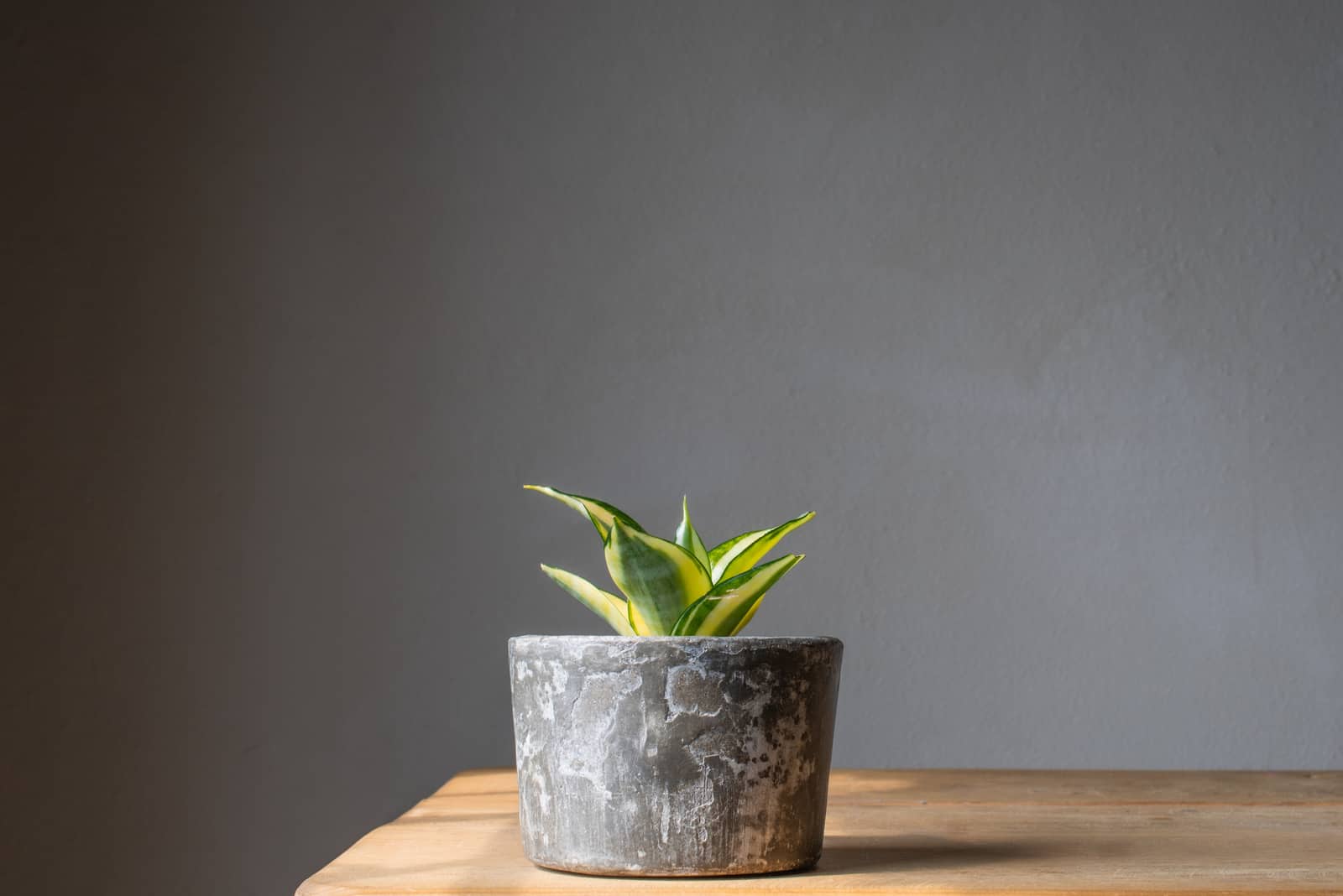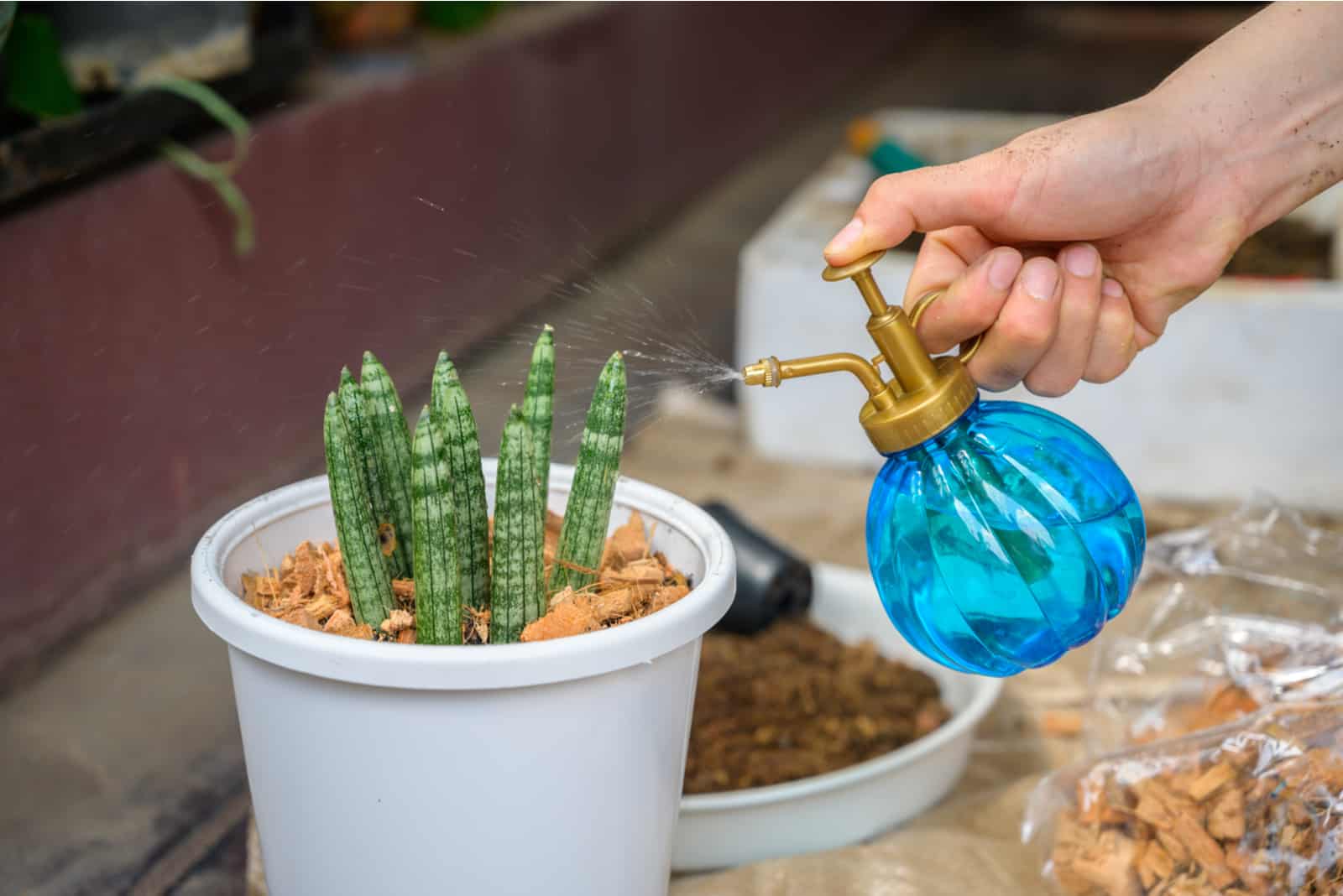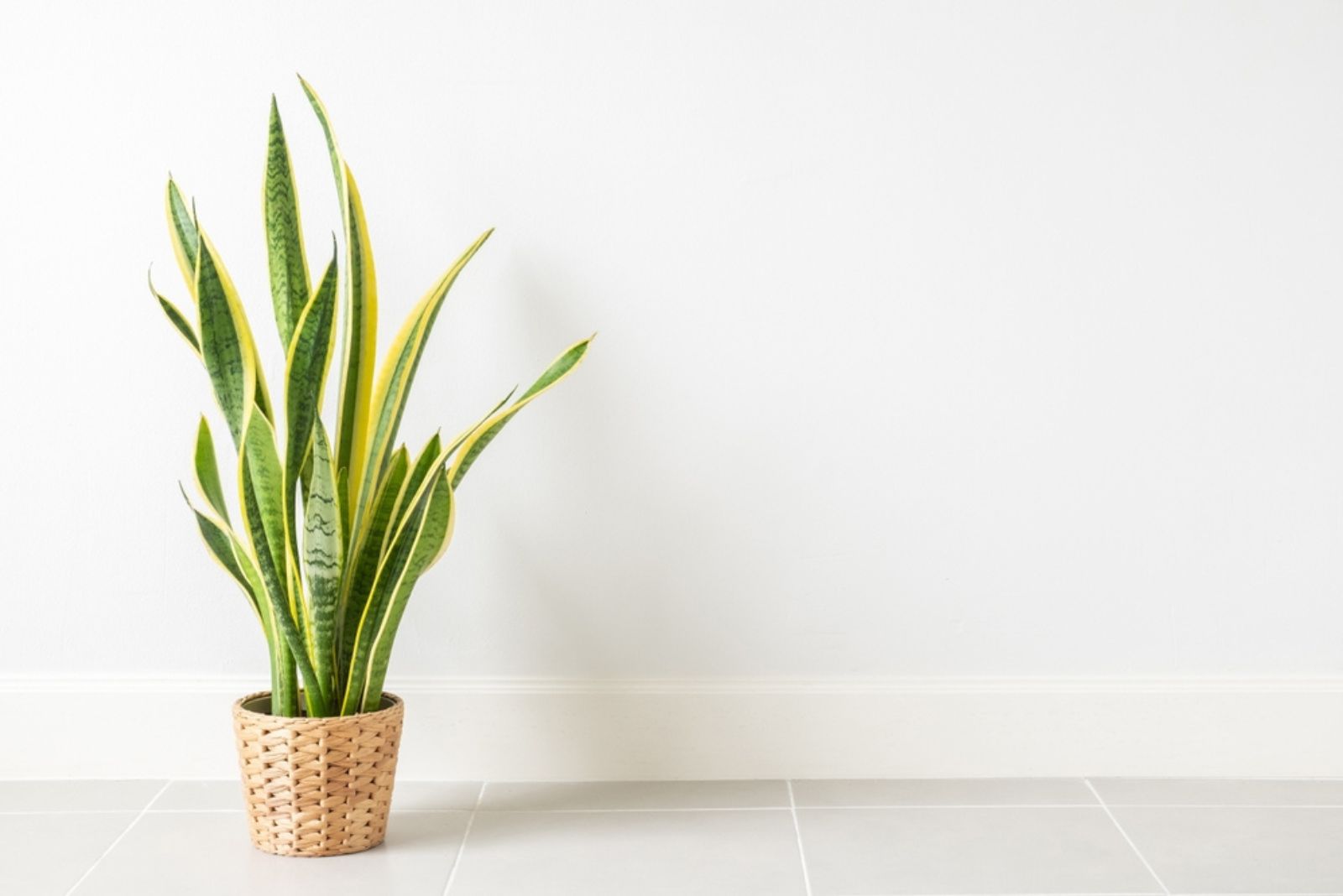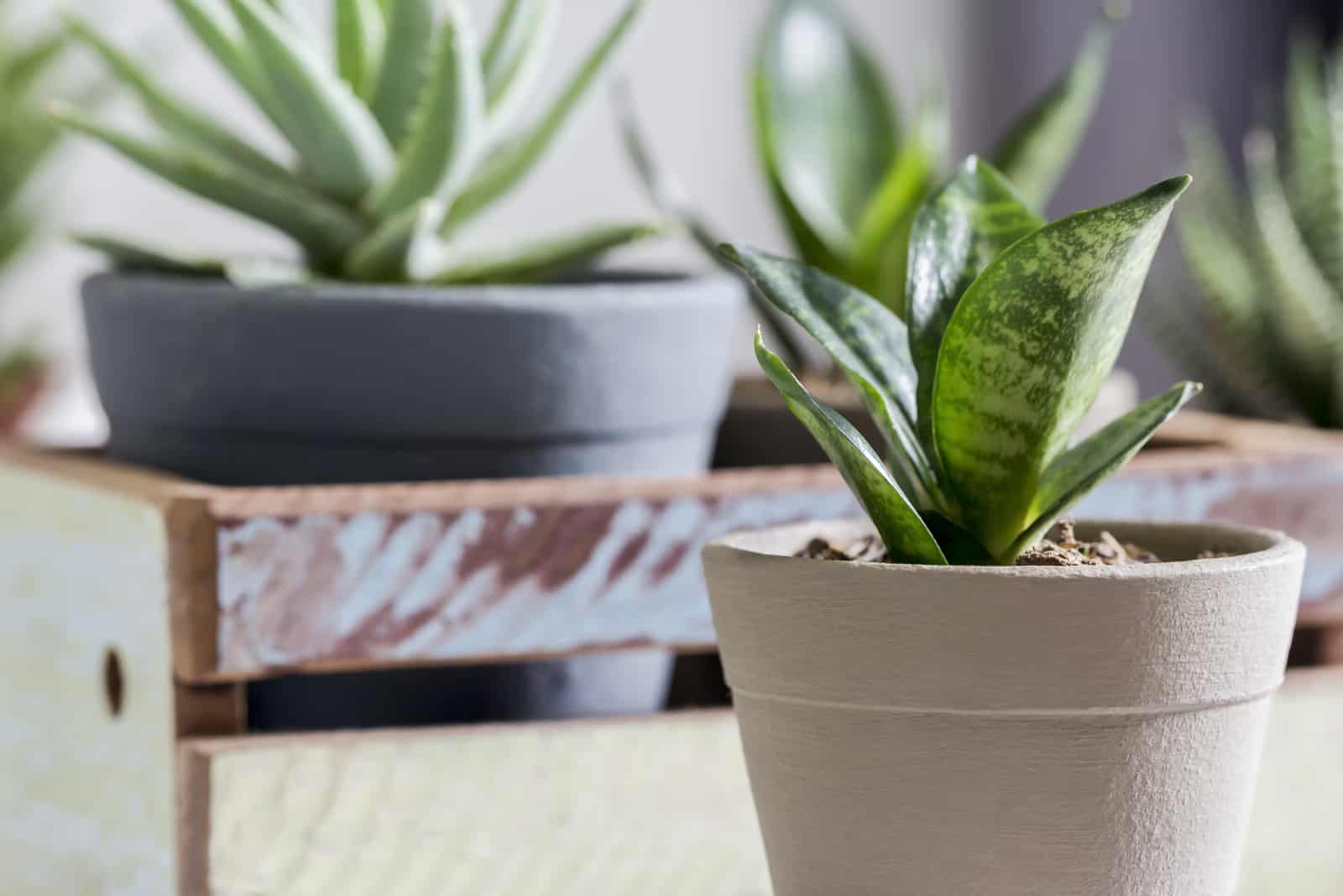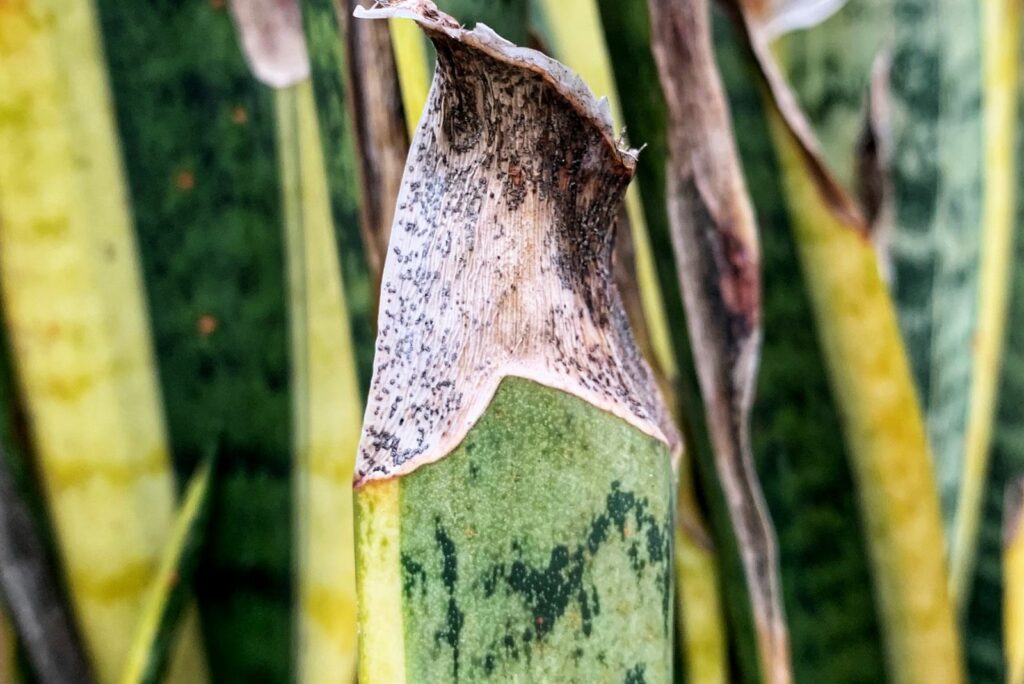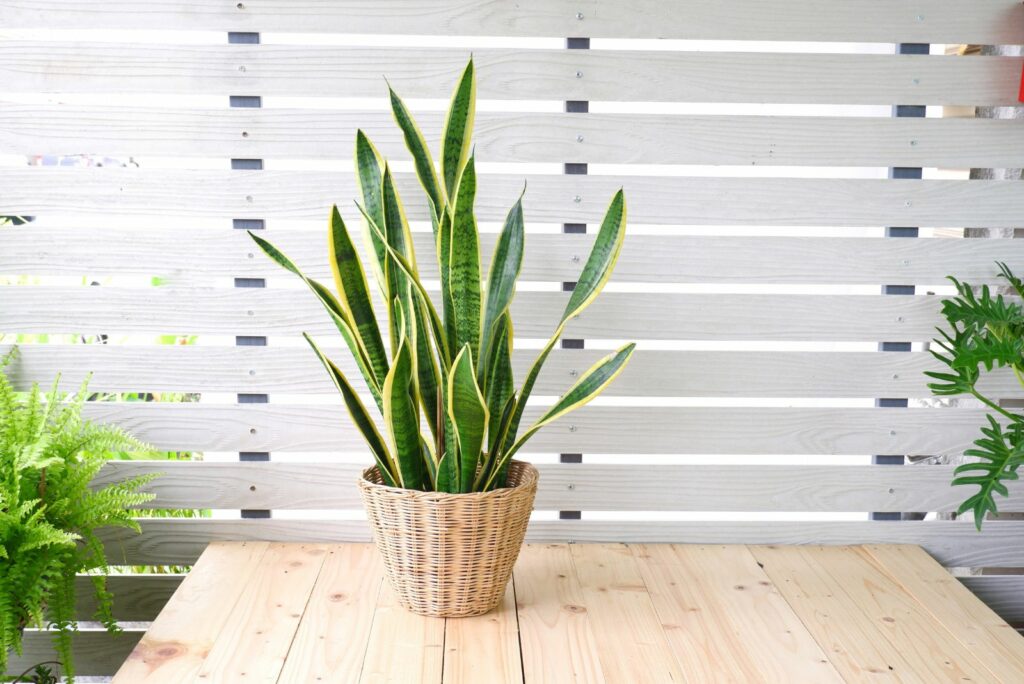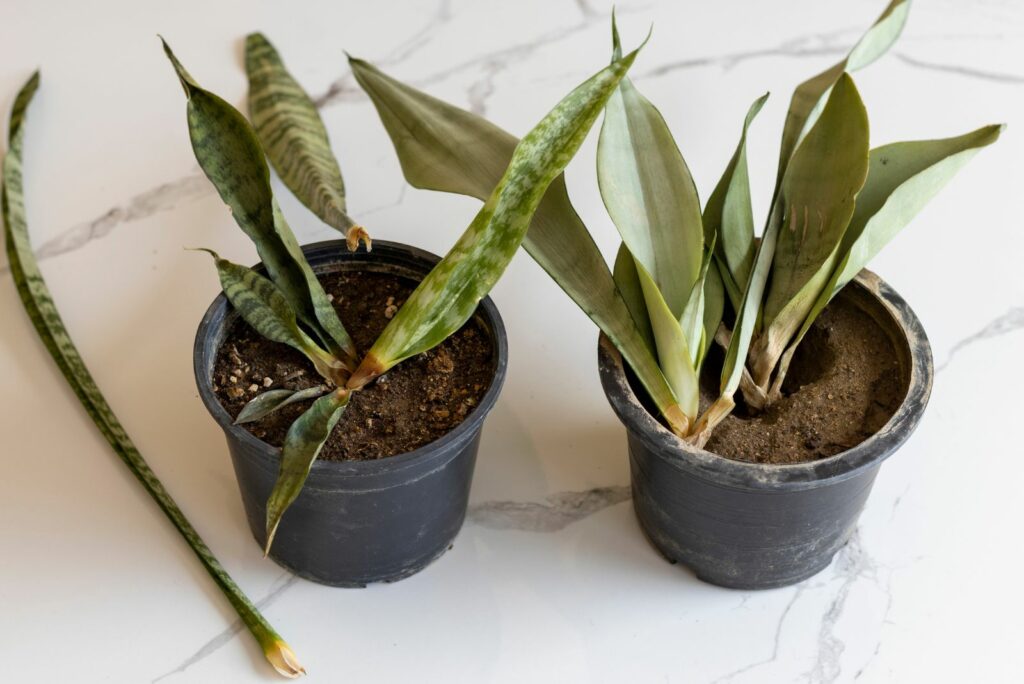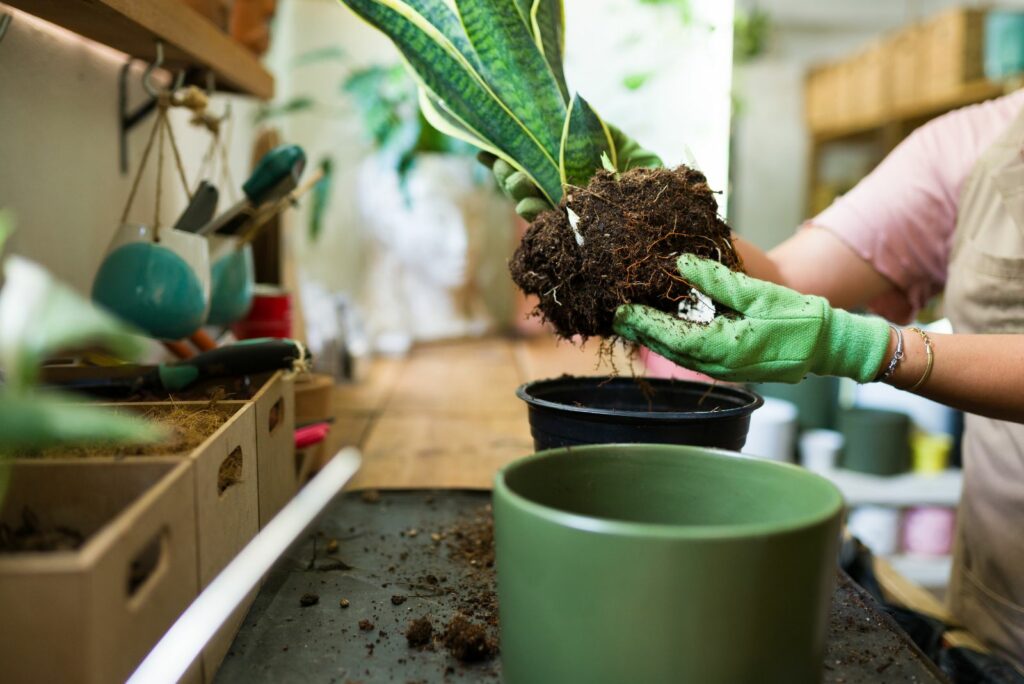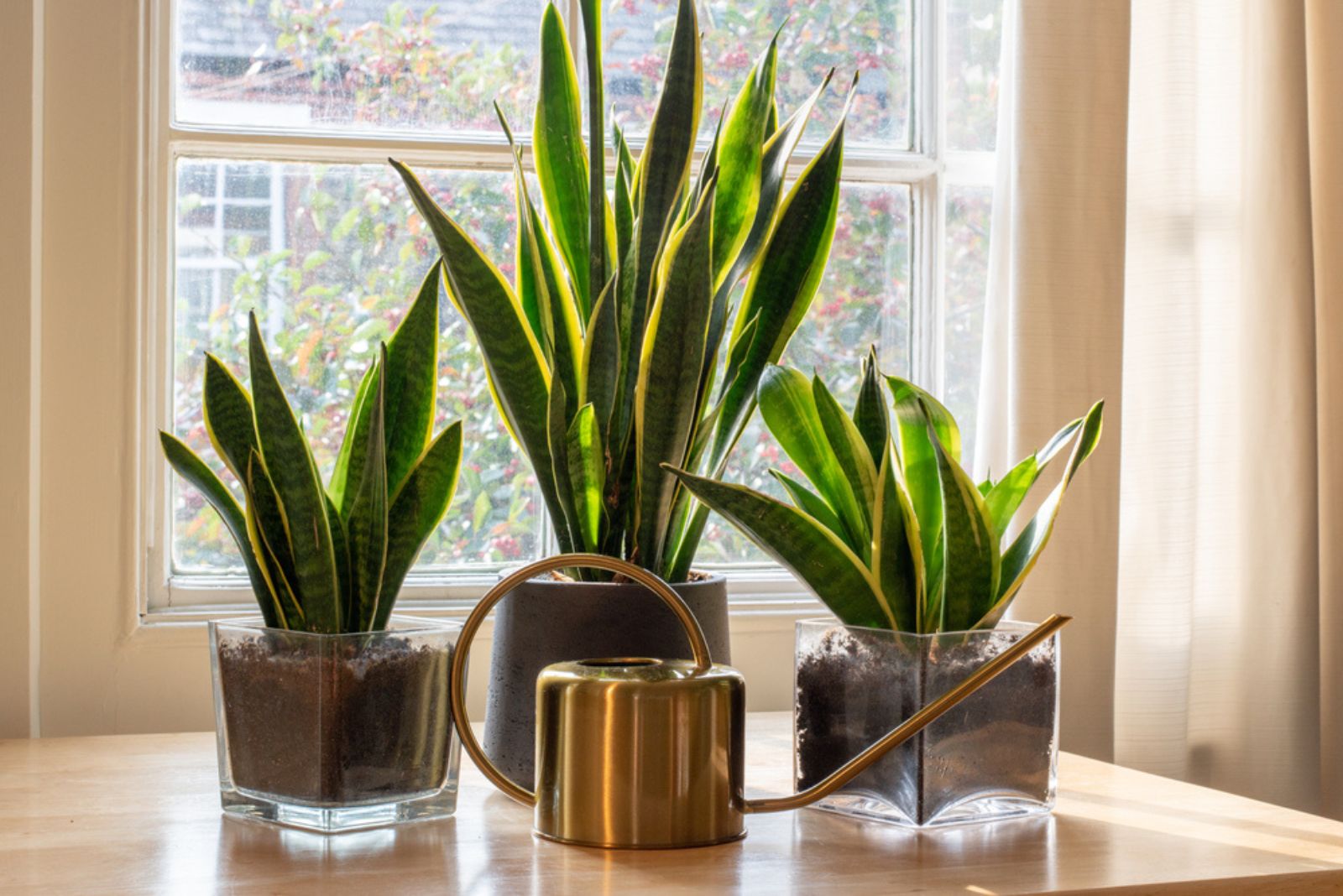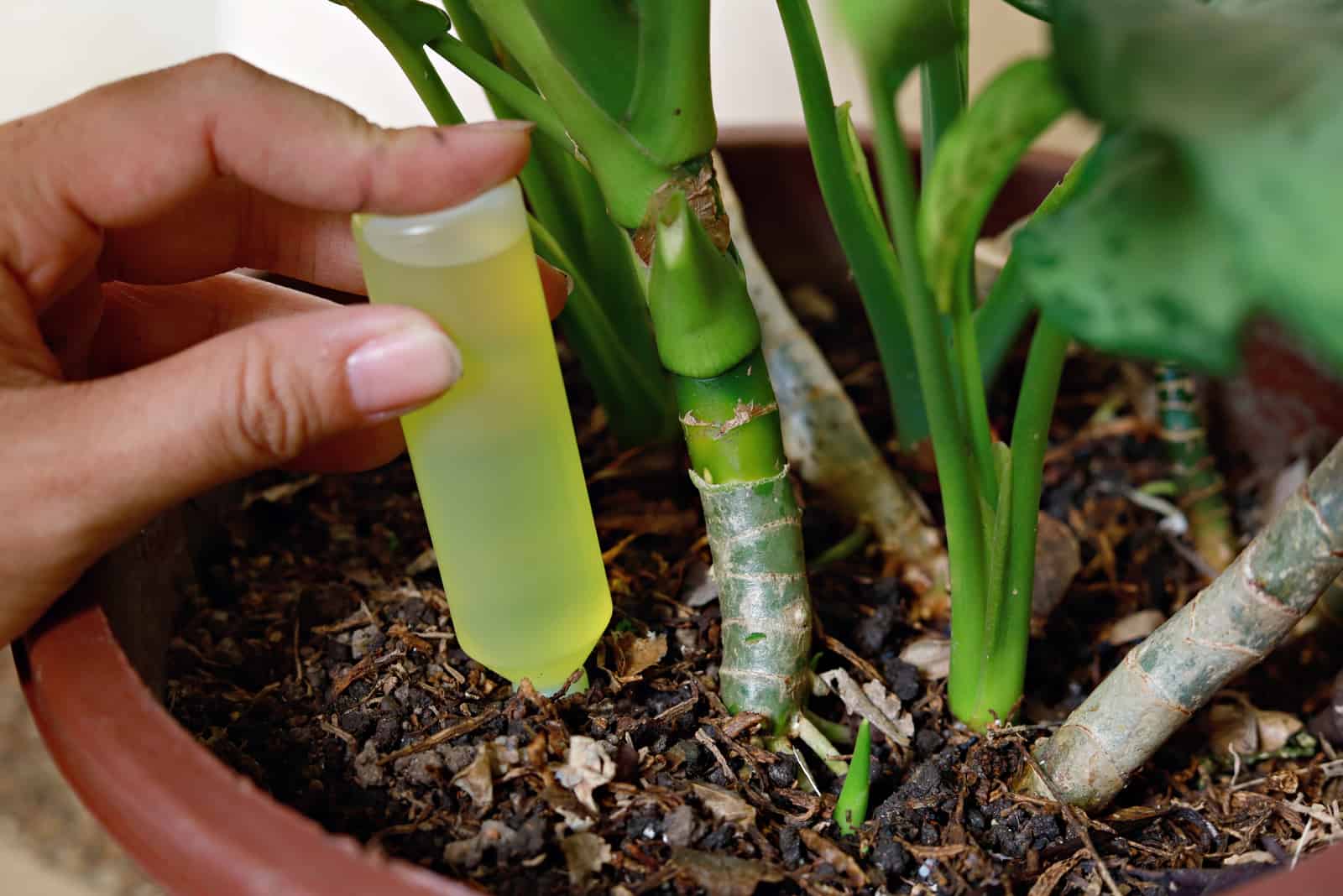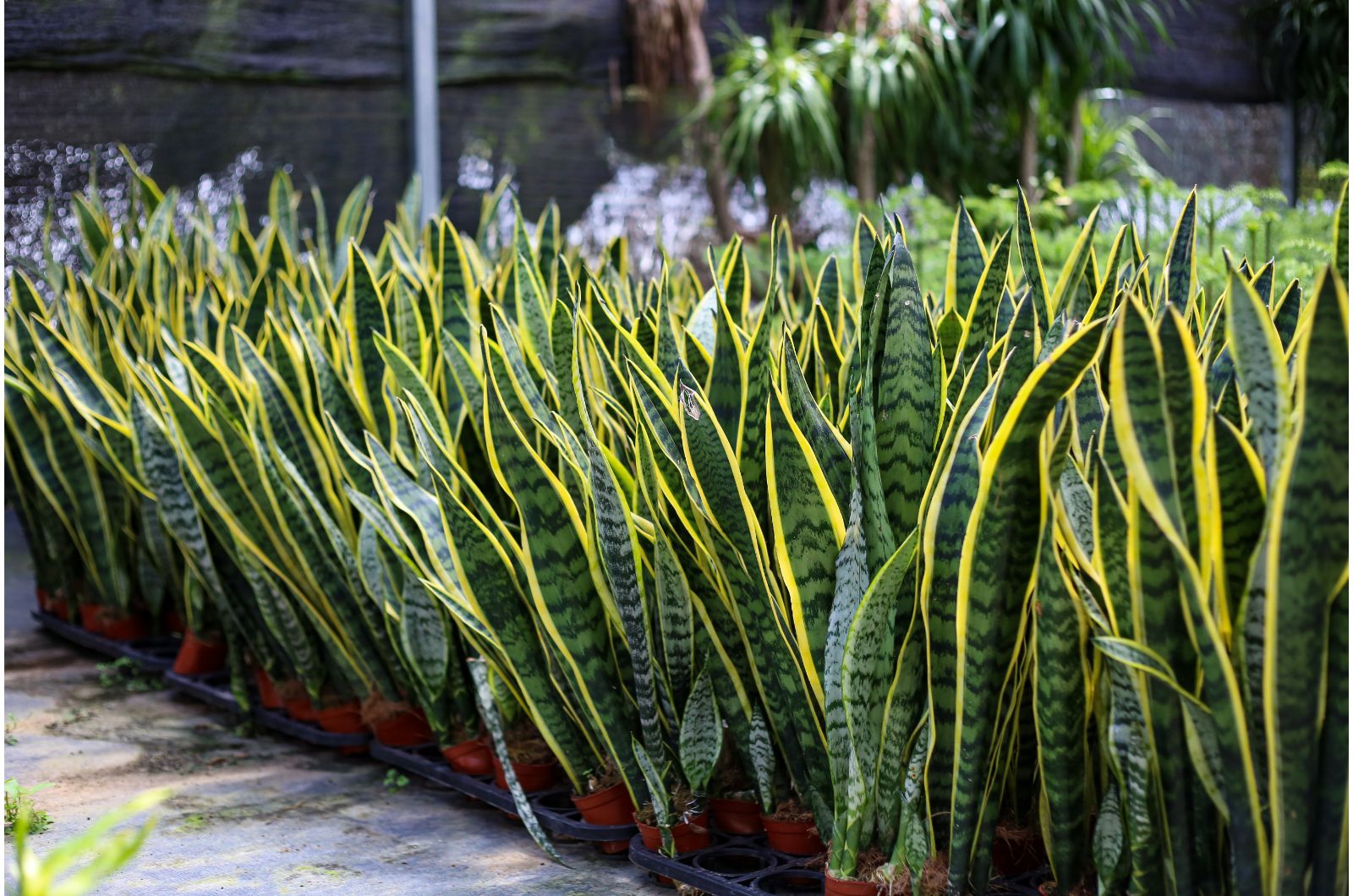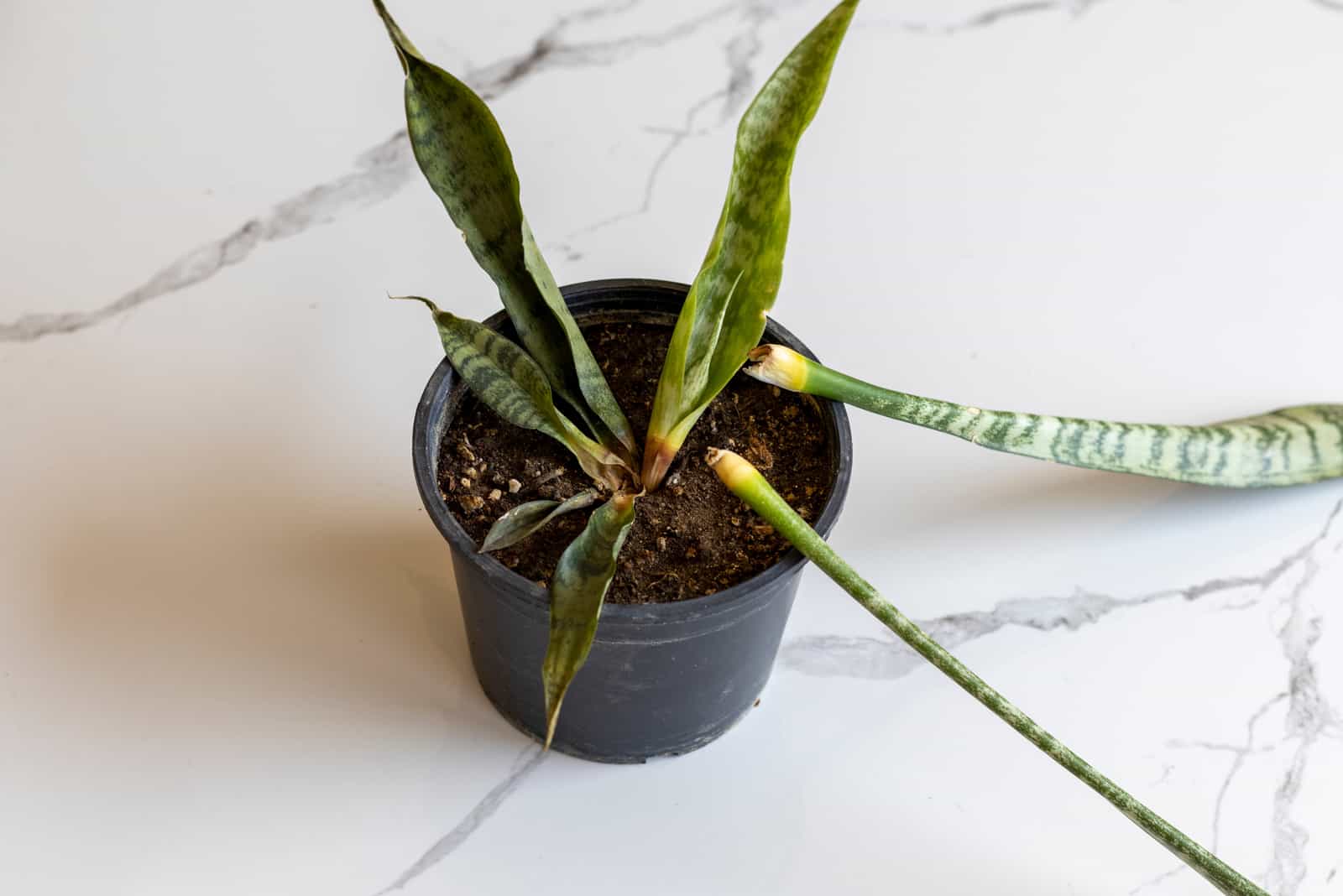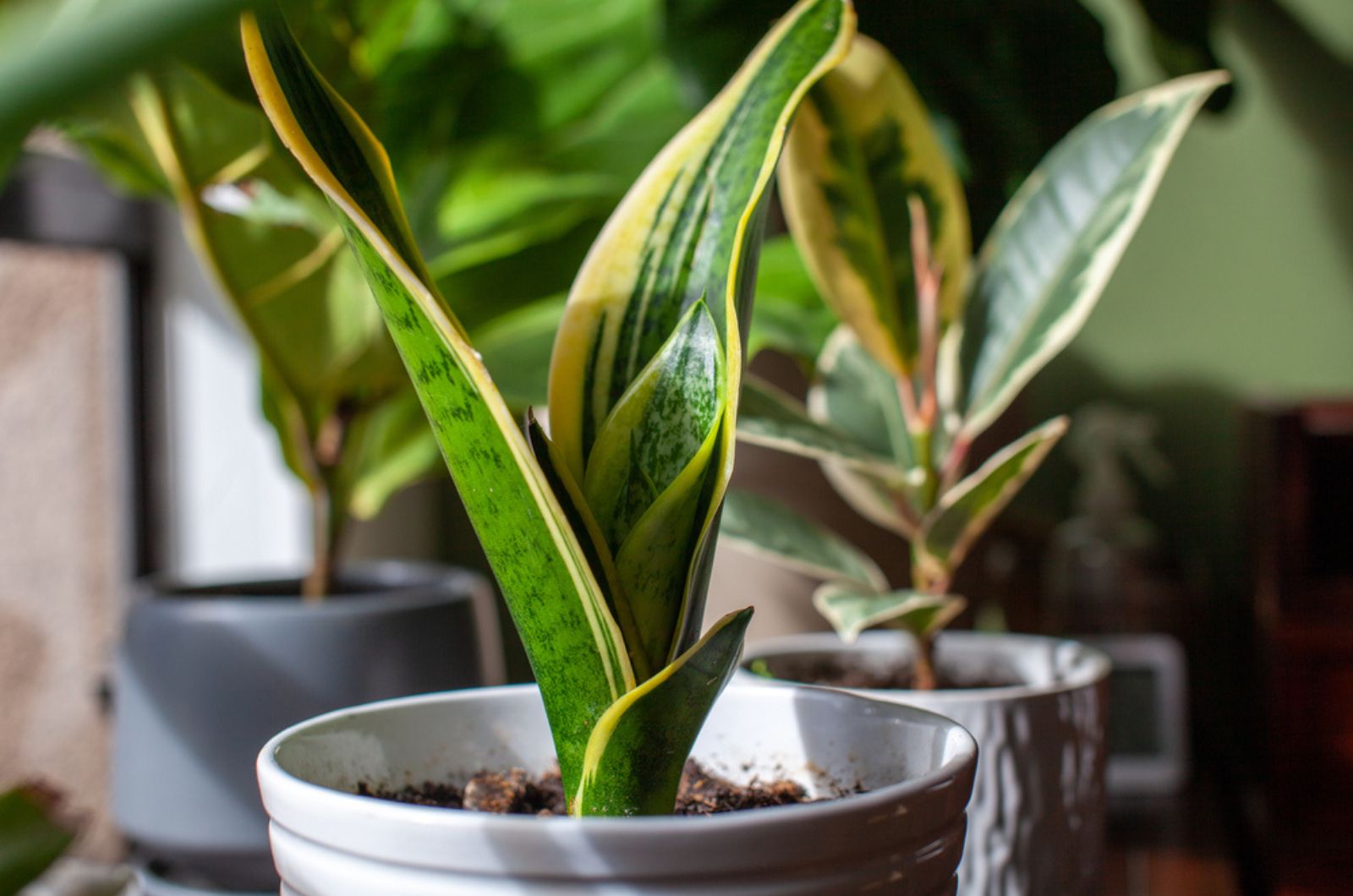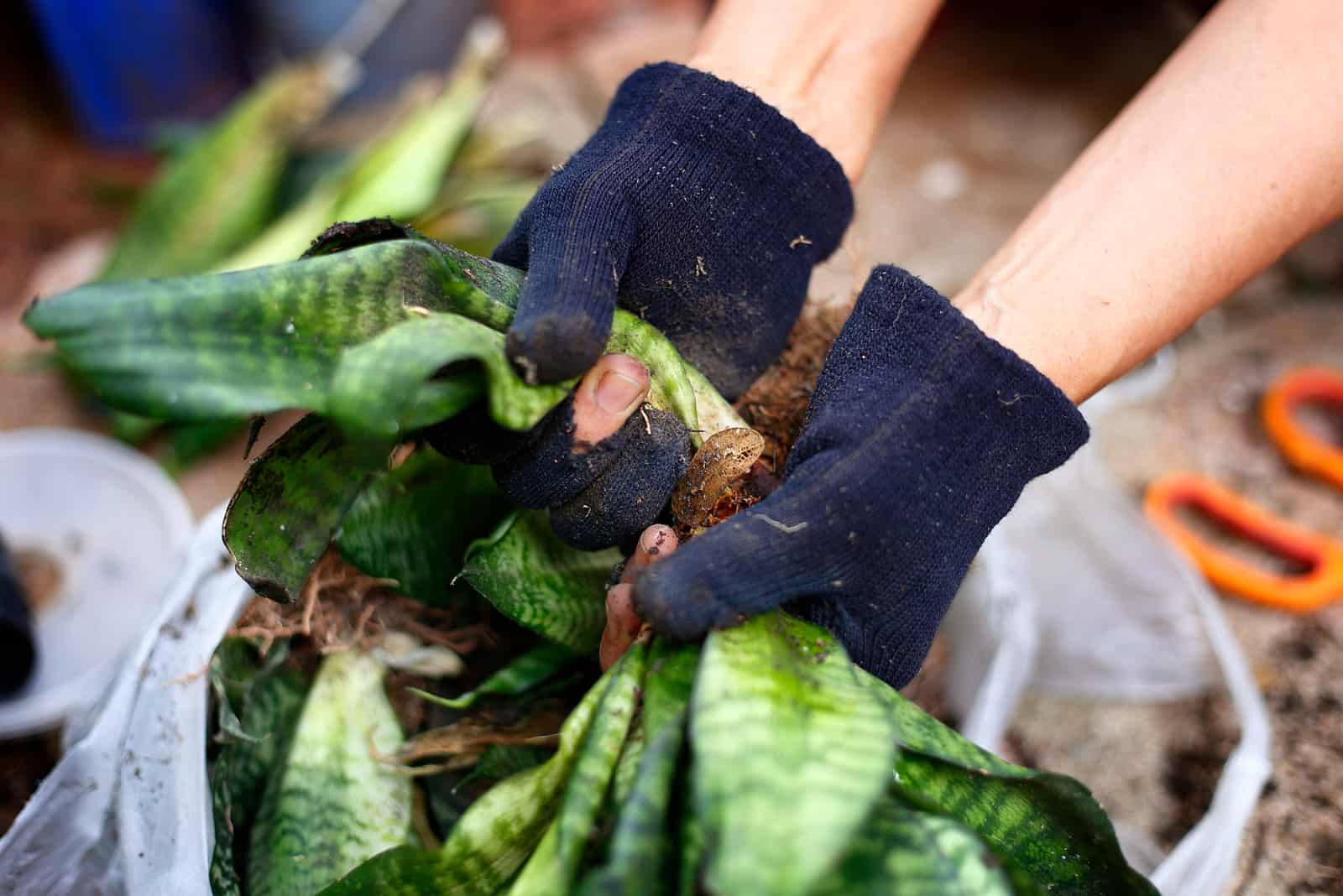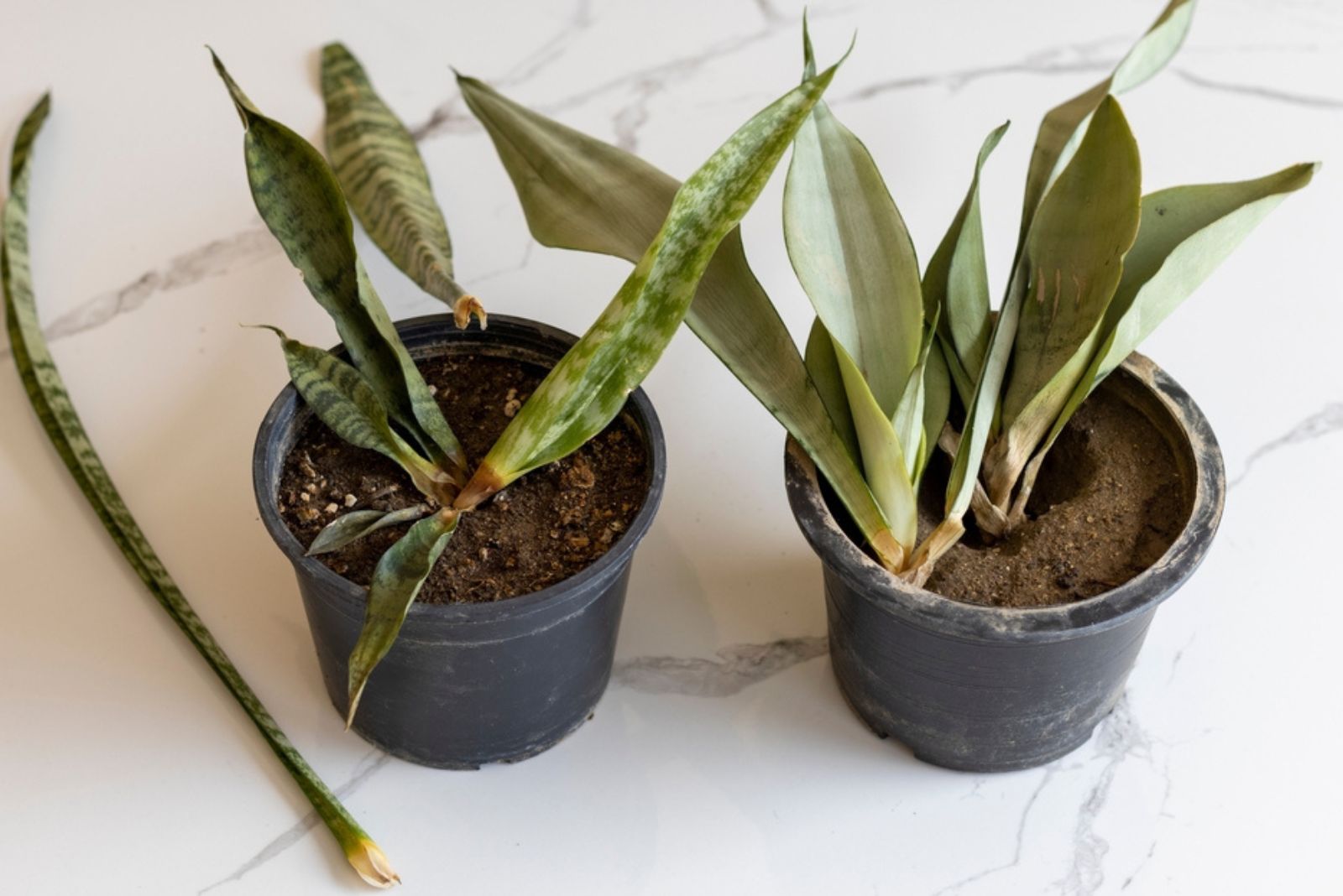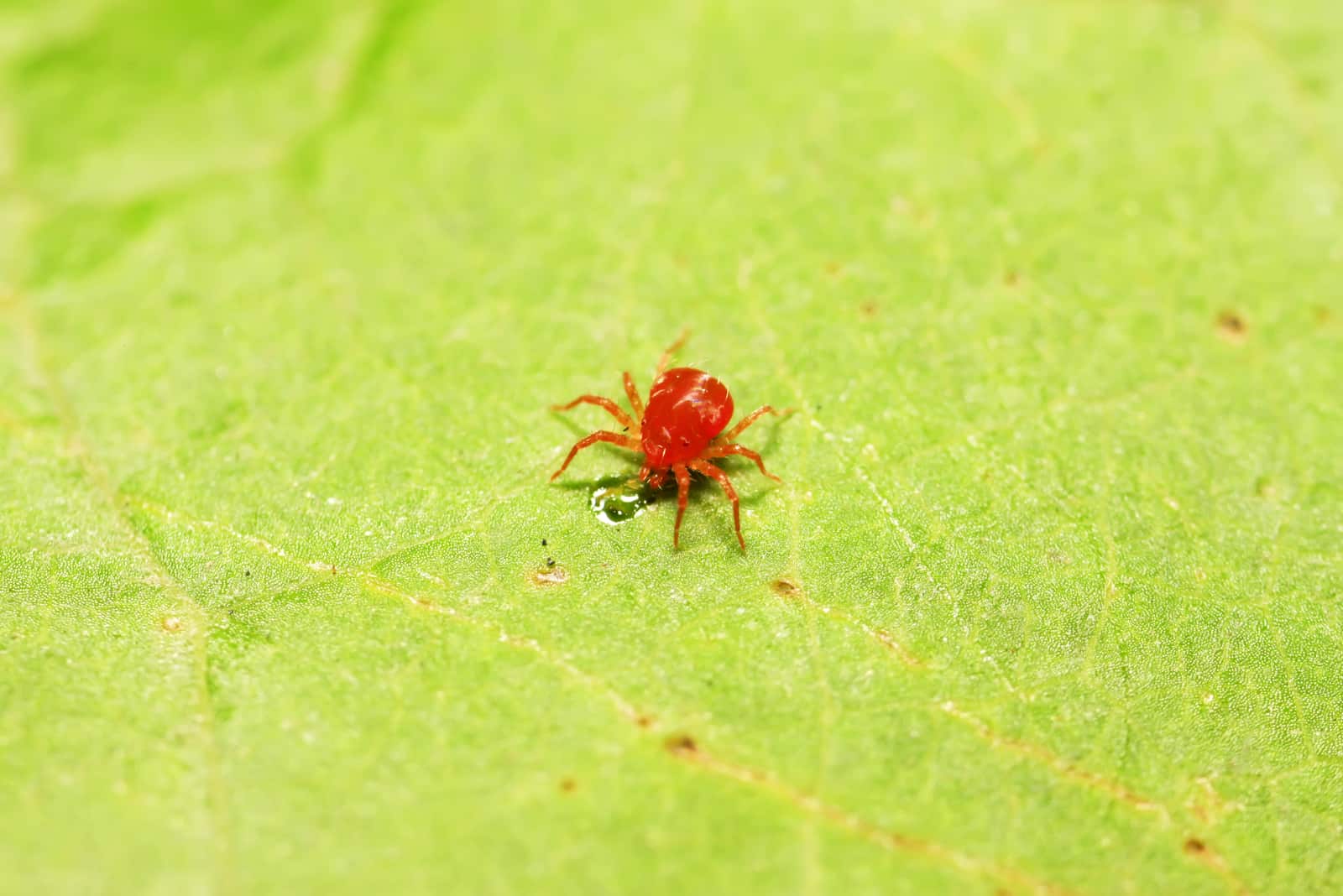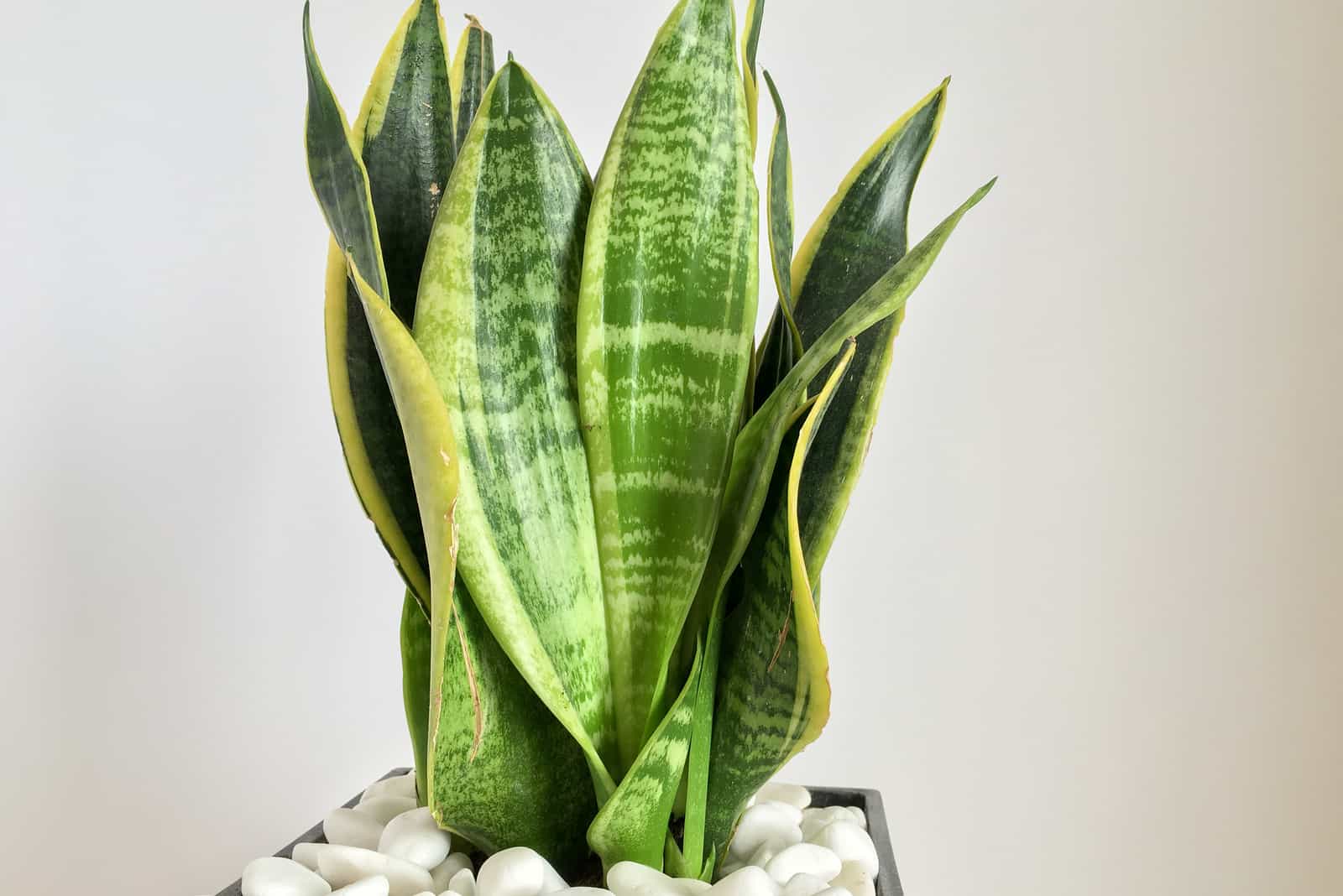Maybe we are not so thrilled with the idea of snakes as pets, however, snake plants are simply a must-have if you are a plant lover like I am!
Snake plants (Sansevieria trifasciata) are very popular houseplants nowadays, mainly because they are hardy plants that don’t require any special care, and also because of their beautiful, variegated leaves that fit perfectly with every home decor.
They are known for being a slow-growing plant, though you might think that your plant is not growing at all!
There can be various reasons why your snake plant is not growing, such as inadequate watering conditions, poor soil quality, nutrient deficiency, and so on.
Let’s take a closer look into the reasons, and what their cause might be.
1. Overwatering
Snake plants are succulents, and they don’t require too much watering. Seriously, they can go even a month without water, and the plant will still look happy and healthy!
Beginner growers are probably not familiar with growing succulents, and they will tend to water the plants frequently to boost their growth rate. Unfortunately, this can cause just the opposite effect.
Yellowing of the leaves is usually a sign of overwatering, and this is when you have to take action, because if you continue to water the plant, it might lead to root rot — this is a dangerous disease that can kill your plant.
A Snake plant needs to be watered every three weeks, though you can always check the soil to see if it is dry — do this by sticking your fingers about three inches deep in the soil, if it is completely dry, then it’s time for watering.
If your plant starts wilting, and the soil smells kind of bad, then the plant has probably been infected with root rot. In this case, the only solution is to repot.
2. Underwatering
Even though they don’t require that much watering, you will still have to give them some water — water is life, am I right? And I’m sure that your Snake plant would also agree on some level.
Nonetheless, if you don’t give your plant enough water for a couple of months, it will definitely affect its growth.
The Snake plant leaves curling, dry soil, and brown leaftips are some of the common signs of underwatering. You can also lift the pot, and if it is somewhat lighter than usual, this means that the soil is completely dry and that your plant needs watering.
Immediately water your plant if you notice some of the above signs. Continue watering it as we have mentioned earlier, by checking the soil dampness.
I usually water my Sansevieria every three weeks, although the watering needs can depend on a few other factors, such as temperature and humidity levels.
In the case of underwatering, you should water it thoroughly — avoid getting snake plant leaves wet because it will make them more prone to pests and diseases.
3. Low Light Conditions
Snake plants are known for tolerating low light conditions — tolerating, not preferring. This is a marketing trick that sellers tend to use in order to sell you this plant, and I know that it can be hard to find the perfect plant to fill the dark empty spaces in your room.
Yet, low light can affect the growth of your snake plant, making this slow-growing variety even slower!
People think that low light actually means no light at all, which is never the case; though this mistake happens too often.
Keep your snake plants in a southern-facing window: this way, they will be able to get enough indirect sunlight to grow happily and healthily!
If you can’t find a suitable place for your snake plant, then you can always invest in lamps for plants that will provide your plant with the artificial light that is necessary for new growth and development!
4. Too Much Light
Snake plants may hail from arid landscapes, but too much sunlight can leave them looking like they just got back from a bad vacation.
If the leaves are turning yellow, developing brown patches, or curling up, they’re getting too much light.
Direct sunlight, especially in hot climates, can scorch their hardy leaves, leaving them damaged and growth-stunted. While they love bright, indirect light, prolonged exposure to harsh rays is a surefire recipe for a stressed-out plant.
5. Plant Rotation
If your snake plant isn’t growing evenly or has leaves flopping in one direction, the culprit might be uneven light exposure.
When only one side of the plant gets light, it will naturally grow toward the brightness, leaving the other side in the shadows—literally and figuratively!
Rotate your snake plant every couple of weeks to ensure all sides soak up an equal amount of light. This small but mighty habit encourages balanced growth and prevents a lopsided look.
6. Poor Soil Drainage
Your snake plant may be tough, but poor soil drainage can make even this hardy survivor wave the white flag. If its roots are sitting in soggy soil, they’re not just uncomfortable—they’re suffocating. The result? Stunted growth, mushy leaves, and the dreaded root rot.
Use a fast-draining soil mix, like one designed for succulents or cacti, to keep excess water from pooling.
If your plant is already showing signs of distress, gently remove it from its current pot, trim any rotting roots, and replant it in fresh soil.
7. Not Repotting The Plant
If your snake plant isn’t growing, it might be signaling that it’s outgrown its home. Snake plants can handle tight quarters for a while, but when the roots start circling and compacting, growth grinds to a halt.
Additionaly, the soil loses nutrients over time, so you’ll need to replace the soil for better results.
Use a well-draining soil mix to set the stage for healthy growth, and make sure the new pot has drainage holes to prevent waterlogging. Spring or early summer is the perfect time to repot, as your plant is naturally in its growth phase.
8. Lack Of Plant Food
This type of succulent is not a heavy feeder, so you won’t have to constantly be adding fertilizers or compost to provide nutrients.
However, they do need some nutrients. Just like you need food to grow big and strong, the same thing applies to your plant too! And if you don’t give it any food, it will stop growing.
A lack of fertilization will slow down the rate that the snake plant grows, eventually it will stop growing at all, and its leaves will lose their characteristic glow!
Immediately start fertilizing your plant. There are a lot of different options out there: you can either put compost into the potting soil, buy fertilizers specifically suited for succulents, or use liquid fertilizer.
Whichever you choose, it is important that it contains all the necessary nutrients for the growth and development of those mesmerizing leaves!
I fertilize my snake plant once every month, though this will depend on the kind of fertilizer that you are using; for instance, if you use liquid fertilizers, you will have to apply them more frequently compared to granular ones.
9. Overfertilization
On the other hand, you could be giving your plant too much plant food, which can also slow down its growth and development. If you apply too much fertilizer, all those chemicals and nutrients will build up in the soil, which can interfere with its normal water absorption and nutrient uptake.
Your snake plant will have brown patches on its leaves, in addition to slow growth, these are the common indicators of overfertilization. Nonetheless, you should be able to recall if you have been feeding your plant too frequently.
If so, the issue is overfertilization and chemical build-up — you should take some action immediately to save your plant.
You can’t just stop fertilizing and hope for the best, it does not work like that. These built-up chemicals have already caused your plant some issues, and they won’t simply go away if you stop fertilizing it.
The only solution is to repot your plant in new soil. Don’t add anything else to the soil, because they have already suffered from excess nutrients and chemicals in their old soil.
As a matter of fact, you should avoid fertilizing the plant for the next six months.
10. Low Temperature & Temperature Fluctuations
The ideal plant care includes maintaining a temperature that ranges from 55 to 85 degrees Fahrenheit during the daytime, according to the preferences of your snake plant. You will also have to pay close attention to the overnight temperatures, which should be from 50 to 75 degrees Fahrenheit.
Snake plants are sensitive to temperature fluctuations, which is kind of their main disadvantage — they can tolerate somewhat lower temperatures, though they might affect your plants’ growth.
For instance, brown rings on the leaves, as well as wrinkled leaves, can form at higher temperatures. Any lower temperature than the specified range, especially if it’s combined with wet soil, can permanently harm your snake plant.
Set the thermostat at any temperature within the preferred range and keep it that way. You can also avoid placing your plant near the fireplace or a space heater.
You should also avoid putting it in areas that get drafty, like windows during the winter season or air conditioning in the summer months.
11. High Humidity Levels
Remember that you are dealing with succulents, and they don’t thrive much in humid environments. Humidity levels around 80% will simply shock your plant and create unfavorable growth conditions.
Your snake plant is able to absorb all sorts of pollutants from the air and acts as an air purifier, which is one of its main advantages for growing indoors, in addition to using them for ornamental purposes.
However, it is also able to absorb water from the air, and if the humidity levels are too high, it will cause excess water absorption and your plant might suffer from the same symptoms as stated in the overwatering section.
Not only will the plant stop growing, but high humidity levels can also lead to root rot, so you can say goodbye to your natural air purifier.
All is not lost yet, and you can still save your plant. Though this solution is pricey, it is totally worth it in order to keep your plant looking happy and healthy!
Trust me, your snake plant will thank you.
12. The Plant Is Rootbound
This phenomenon is associated with the size of the pot — if you have provided adequate growing conditions, your plant’s roots will grow in the pot until they have no space left!
The roots will fill up the pot, leaving almost no space for the soil. Nonetheless, you will still have a healthy snake plant, it will just stop growing and producing new foliage.
Sometimes, the pots can actually break because the roots and rhizomes are strong, and they just keep on growing and growing!
Though some growers tend to keep their snake plant root bound as it has reached an ideal height; I tend to repot my snake plant to encourage the growth of new leaves all the time!
Bear in mind that the plant will only grow during the growing season. It is capable of producing about 4 leaves per growing season.
If you are a gardener newbie, I suggest that you follow this video to successfully repot your snake plant:
You can also take a chance and start growing a new plant from scratch by separating the rhizomes and propagating them. You can also use leaf cuttings for propagation as well.
13. You Forgot To Prune
Pruning is another element that impacts the rate of a snake plants’ growth, as it encourages the new leaves’ growth. If you forget to prune your snake plant, it will get too bushy and the new leaves won’t have enough space to grow.
This could be another reason why your snake plant is not growing, and it can be easily fixed!
Not only will pruning help to maintain your plant’s appealing shape, but it will also encourage new growth and development!
The plant should only be pruned during the growing season. Avoid pruning it in the winter months because your plant is dormant.
Always disinfect your pruning equipment before using it. Remove the damaged and yellowing leaves, as this will prevent infections from spreading to the rest of the plant.
14. Dormancy
The majority of houseplants tend to grow slower during the colder season, and in these cases, we say that the plants have entered dormancy. A lack of light during the winter, and also lower temperatures, tend to slow down a snake plants’ growth, which leads to a simpler plant care guide.
During dormancy, you will have to water your plant much less than you did during the growing season, and you should also avoid fertilizing it during this period.
There won’t be any changes to your plant; meaning, it will still remain healthy and issue-free, but it will just grow slower in these couple of months.
There is not any solution to this — it is simply the way that nature works; and what nature wants, nature gets.
Overfertilization and frequent watering are common mistakes that occur during the dormant period, which could be a reason why the plant grows poorly, or is not growing at all, in the growing season..
15. Pests And Diseases
One of the common problems that occur when growing lots of houseplants are pest infestations and accompanying diseases.
Even though your plant is tough, it is still susceptible to these little annoyances that treat your plant like a buffet and steal its essential nutrients!
The two most common pests are mealybugs and spidermites.
Red leaf spot, Root Rot, and Southern blight are diseases that can also be the cause of a snake plant not growing but can also affect the overall health of your plant.
Some of these pests can be hand picked off, such as mealybugs. Nonetheless, you should always use some kind of solution that kills the pests and nurtures your plant back to life.
If you want to go organic, you can use neem oil or rubbing alcohol — just put the oil all over the leaves, or spray rubbing alcohol and water on the place where the pests have settled down.
One of the options to prevent mealybugs is to use balanced fertilizer, or you can simply use pesticides to get rid of these annoyances!
Bear in mind that you should always isolate a plant that has been infested, to prevent the spreading of the pests to other plants in your house.
How Can I Make My Snake Plant Grow Faster?
There are a few things that you can do to boost up the snake plant’s growth rate, though you should primarily focus on proper plant care.
First, you should find the best potting mix for your snake plant; we have already mentioned it earlier, and we are mentioning it again: buy a good, well-draining soil that is suitable for succulents!
I recommend that you follow our recipe mentioned earlier and you’ll have the best potting soil for your snake plant.
Another thing that you can do is find a better place in your home to put your plant, with much more suitable light conditions — your plant will simply thrive in indirect, bright light!
Place the snake plant near a bright light window to be sure. The optimum location for the plant is near a south-facing window. You can use a grow lamp to increase the amount of light in your room.
And lastly, you should repot your snake plant once every two or three years, so the roots have enough space to grow and develop, which will also be accompanied by the appearance of new leaves!
If you have planted your snake plant in the garden and are landscaping, be ready for your plant to grow up to 4 feet tall.
There can be a few causes for why your snake plant is not growing but luckily, these problems can be easily fixed, and your snake plant will get back on track and continue growing and developing for many years to come!

